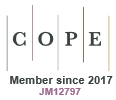WF24226Risk perceptions after wildfires: insights from Bijie, China and comparisons with other countries
This study examines public risk perceptions following wildfires, with a focus on Bijie, China, and compares these perceptions with those from other countries. The research utilizes the ‘information-trust-confidence’ framework and surveys 408 residents in Bijie. International comparisons highlight diverse methodologies and distinct differences in risk perceptions across countries and regions.
WF24226 Abstract | WF24226 Full Text | WF24226PDF (3.8 MB) Open Access Article







